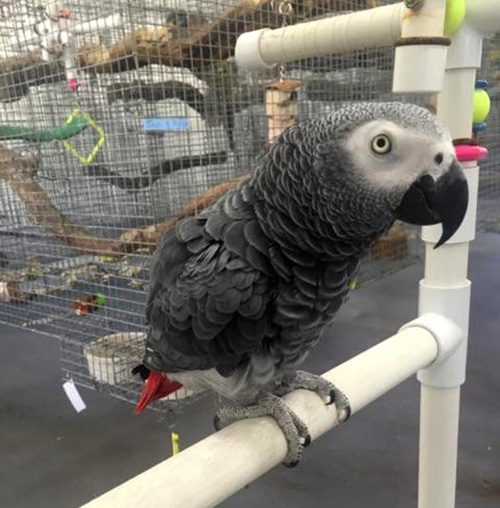Texas A&M Researchers “Paint” the Congo African Grey Parrot’s Chromosomes
COLLEGE STATION, Texas – Congo African grey parrots are well known for their intelligence and beloved by many as pets, but little is known about their genetic make up. Researchers at the Texas A&M; College of Veterinary Medicine & Biomedical Sciences (CVM) are changing that by studying the parrot’s chromosomes.

In a paper published in Cytogenetic and Genomic Research, scientists looked at the Congo African grey parrot’s chromosomes and compared them to other parrot species from South America and Australia. “This is the first study of its kind in true African parrots,” said Dr. Terje Raudsepp, associate professor and lead author of the study. “So far, analogous work in parrots has been done in three South American macaws, Australian budgerigars and cockatiels, and peach-faced lovebirds from Asia and Africa.”
The study found that Congo African grey parrots were strikingly similar to Neotropical macaws found in South America. Unexpectedly, Congo African grey parrots were genetically more similar to Neotropical macaws, such as the scarlet macaw and the red-and-green macaw, than parrots from Australia, such as cockatiels and budgerigars.
“We found that the rearrangements are essentially, but not completely, indistinguishable from the scarlet macaw,” said Dr. Ian Tizard, distinguished professor of immunology at the CVM, director of the Schubot Exotic Bird Health Center, and an author of the study. “That was a bit of a surprise because you’re talking about an African parrot and a South American parrot. It implies a much closer relationship between the South American parrots and the African parrots than we would have predicted.”
Further, Tizard suggested that this genetic similarity could have originated before Africa and South America were separated over 70 million years ago. The African and South American parrot species ended up on opposite sides of the world due to continental drift, yet much of their genome remained similar.
To get a better look at the African grey parrot’s chromosomes, the researchers “painted” them, using a technique known as Zoo-FISH (Fluorescence In-situ Hybridization). This color codes a known genome-in this case the chicken’s genome-and compares it to a less understood genome, such as the Congo African grey parrot. By painting the chromosomes with Zoo-FISH, researchers can identify identical or similar sets of genes between species that get rearranged during the process of evolution. For example, genes that are all together on one chromosome of one species may appear on two different chromosomes in another species.
“Zoo-FISH, or comparative chromosome painting, allows comparison of chromosomes of different species at a molecular level and exchange genome sequence or gene mapping data between the species,” Raudsepp said. “Zoo-FISH shows chromosomal correspondence between species but also allows indirect transfer of genetic information from well-studied species, such as the chicken, to species with no genome sequence information, such as African grey parrots.”
Although the genes’ locations on the chromosome don’t greatly affect the animal, the comparative location of these genes can give researchers clues about evolutionary relationships. Species with genes in similar chromosomal locations are generally more closely related than those with dissimilar genetic arrangements. “From the body’s point of view, it doesn’t matter whether a gene is on chromosome one or chromosome seven, as long as it’s there,” Tizard said.
Increased understanding of the Congo African grey parrot also has conservation implications, Tizard said. Although parrots may look the same, they might be genetically distinct and, in some cases, separate species. “We’re trying to dissect out these relationships and they’re proving to be a little bit more complex than expected,” he said.
This is the third collaboration between Raudsepp’s research group and researchers at the Schubot Center, including sequencing the genome of the scarlet macaw. More collaborations between the groups are expected in the future, according to Raudsepp. Tizard agreed and suggested that similar studies could be done on other exotic birds.


